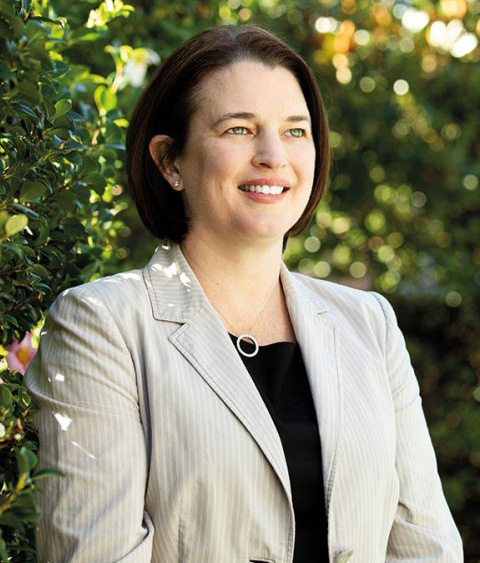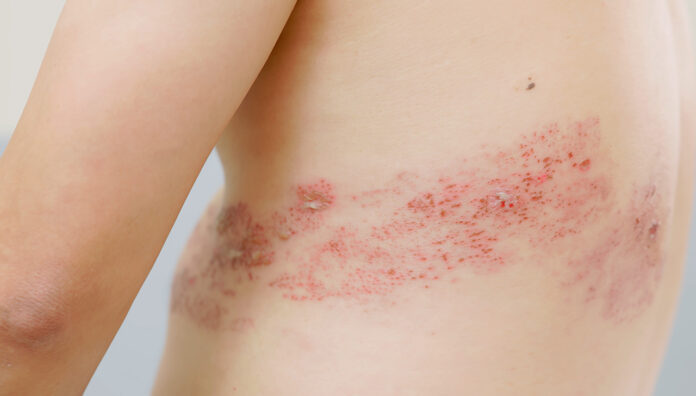Herpes Zoster (HZ), or shingles, is a common viral infection, with one in three people developing the condition in their lifetime.
The risk of contracting shingles increases with age, with the annual rate more than doubling from 6 per 1,000 in patients aged 50–59 years to 15 per 1,000 in people aged 70–79 years.
Those diagnosed with shingles have also rated it as one of the most painful infections, said Associate Professor Michael Woodward AM, Head of Aged Care Research, at Austin Health, during PSA’s packed ‘Mastering Shingles Vaccination’ webinar.

‘On the pain scale where 50 is about the most severe pain you could ever have, shingles is right up there with abdominal hysterectomy,’ he said.
Vaccination is the most effective way to prevent shingles infection and long-term complications, including postherpetic neuralgia.
While integral to the shingles vaccination effort, pharmacists are set to become an important part of shingles management too – crucial to reducing excruciating pain associated with the viral infection.
Last week (21 February), it was announced that the Victorian Pharmacy Prescribing Trial would expand to include shingles management. The New South Wales Pharmacy Trial is also expected to expand next month to include shingles management. When the Queensland Pharmacy Pilot soon expands, participating community pharmacists across the state will soon follow suit.
Here’s what pharmacists need to know about the condition, treatment windows and prescribing options.
‘Excruciating stabbing, electric pain, like an electric shock’
In the prodrome stage, patients may experience nerve pain, lethargy, and skin sensations such as burning or itching for 48–72 hours in the area where the shingles rash will eventually develop.
‘By the time the rash comes, the nerve has already been damaged, putting you at risk of the long-term consequences,’ A/Prof Woodward told the webinar.
During the acute stage, the rash typically manifests as flat or raised spots on the chest, abdomen, back or face, eventually developing into fluid-filled blisters that can take up to 2–4 weeks to heal.
‘The presentation of acute shingles is an excruciating stabbing, electric pain, like an electric shock,’ he said. ‘Other shingles symptoms can include headache, photophobia, malaise and fever.’
In up to 25% of cases, patients will develop herpes zoster ophthalmicus, with symptoms including blisters on the forehead and nose, eye ache and redness, and eyelid swelling.
How quickly does treatment need to start?
Antiviral treatment, which must be started within 72 hours of rash onset, will help to relieve acute pain and reduce the duration of the rash, said A/Prof Woodward.
‘If a person with shingles has been treated properly with an antiviral, the weeping rash is going to disappear much more quickly,’ he said.
Oral guanine analogues also reduce viral shedding and ocular complications, said PSA NSW State Manager Amanda Fairjones MPS.

‘Aciclovir, famciclovir and valaciclovir are the recommended [options] in immunocompetent adults and adolescents,’ she said.
For those who are immunocompromised, treatment should be considered irrespective of the timing of rash onset.
Research shows valaciclovir and famciclovir are more effective in relieving pain associated with acute shingles and postherpetic neuralgia than aciclovir.
Missing the critical treatment window could leave patients open to further complications down the road, particularly those with herpes zoster ophthalmicus, who can develop permanent vision impairment.
What can pharmacists prescribe for shingles?
In Victoria, treatment options trained pharmacists in trial pharmacies can prescribe for shingles include:
- valaciclovir, first line (1 g orally 8-hourly for 7 days)
- famciclovir, first line (500 mg orally, 8-hourly for 7 days, and 10 days for immunocompromised patients)
- aciclovir, second line (800 mg orally, 5 times daily during waking hours for 7 days).
According to the Protocol for Management of Herpes Zoster (Shingles), patients must be aged 18 or over to receive treatment. Upon clinical review, the patients must present with signs and symptoms indicative of HZ, including a rash.
Should the patient also present with the below symptoms, indicative of Herpes Zoster Oticus (Ramsay Hunt syndrome) but no rash can be identified, they should immediately be referred to a GP or emergency department (ED) for urgent review:
- hearing loss
- reduced tolerance to sound
- tinnitus
- ear pain.
Patients should also be referred for review when presenting with other symptoms indicative of Herpes Zoster Oticus.
Should a rash in or around the ear be identified that is confirmed as HZ, patients should be referred to either the Royal Victorian Eye and Ear Hospital ED where possible, or local ED.
Patients with a rash affecting the eye or other symptoms suggesting herpes zoster ophthalmicus should be referred to ED, including:
- skin symptoms such as acute vesicular rash that’s unilateral
- ocular symptoms such as pain, redness, watering, photophobia, blurred/ decreased vision.
Patients presenting with a rash involving the tip of the nose (a Hutchinson’s sign) should also be referred to ED.
If patients present within the treatment window, and the above conditions are excluded (noting that consideration of pharmacist treatment may still be appropriate in some of these patients – see protocol), antiviral treatment by pharmacists may be considered where clinically appropriate.
Pharmacists in Victoria providing shingles management services will be required to adhere to the protocol, including where it is updated, said Jarrod McMaugh MPS, PSA Victorian Branch State Manager.
While the start date of the Queensland Pharmacy Pilot is yet to be confirmed, participating pharmacists will follow the approved Herpes Zoster Clinical Practice Guideline which includes the ability to prescribe antiviral therapy in accordance with the TG when it does commence, said PSA Queensland Branch State Manager Nicole Floyd MPS.

‘Timely access to identification and effective management with antivirals is crucial with shingles,’ she said.
‘Leveraging the trusted network of community pharmacists throughout Queensland is set to improve patient access, a logical step considering the challenges the healthcare system is currently facing.’
Complications
Around 25% of people who have shingles go on to develop postherpetic neuralgia that lasts for up to 3 months after the original episode of shingles, said A/Prof Woodward.
Where ophthalmic division is involved in herpes zoster ophthalmicus, longer-term complications include potential loss of vision and secondary infection.
‘Wherever the shingles rash occurs, disseminated disease, hearing loss, neurological complications [can manifest],’ he said. ‘There’s about 16% increased risk of stroke after an episode of shingles, particularly [herpes zoster ophthalmicus].’
Training to provide shingles treatment
Before providing a shingles management service, pharmacists will need to undergo accredited training.

Ms Fairjones said aspects likely to be covered include:
- patient assessment
- diagnosis
- transmission
- pharmacotherapy for the management of shingles
- pharmacotherapy for acute pain
- infection prevention
- complications.
Training for shingles and mild plaque psoriasis will be launched prior to the program starting on 1 March in Victoria, said Mr McMaugh, with pharmacists who take up skin conditions activities required to offer both services.
‘The PSA is delivering training endorsed by the Victorian Department of Health,’ he said. ‘Pharmacists can only undertake the skin conditions activities in the Victorian Community Pharmacy Statewide Pilot if they have completed endorsed training.’



 John Jones MPS, pharmacist immuniser and owner of My Community Pharmacy Shortland in Newcastle, NSW[/caption]
John Jones MPS, pharmacist immuniser and owner of My Community Pharmacy Shortland in Newcastle, NSW[/caption]


 Debbie Rigby FPS explaining how to correctly use different inhaler devices[/caption]
Debbie Rigby FPS explaining how to correctly use different inhaler devices[/caption]




 Professor Sepehr Shakib[/caption]
Professor Sepehr Shakib[/caption]

 Lee McLennan MPS[/caption]
Lee McLennan MPS[/caption]
 Dr Natalie Soulsby FPS, Adv Prac Pharm[/caption]
Dr Natalie Soulsby FPS, Adv Prac Pharm[/caption]
 Joanne Gross MPS[/caption]
Joanne Gross MPS[/caption]





